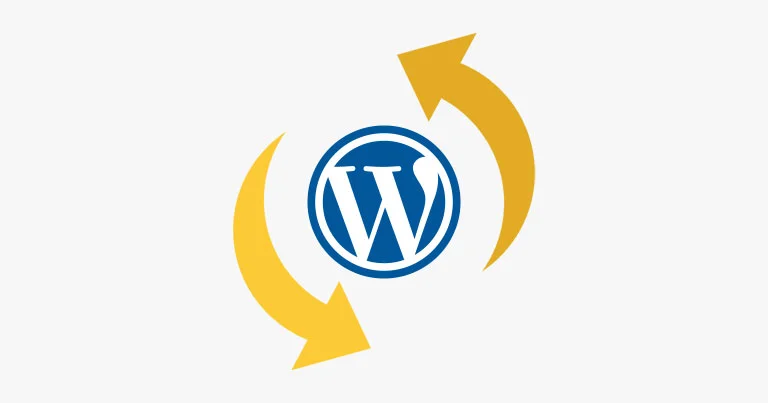Learn how to restore your WordPress site after a hack with this comprehensive recovery plan. We walk you through the essential steps, backed by real case studies, to get your site back online securely and swiftly.
Introduction: The Reality of a Hacked WordPress Site
One morning you wake up to discover your WordPress website has been hacked. Realizing your hard work, content, and maybe even client data are at danger causes the fear. For many owners of websites, this dream scenario is a sad reality as WordPress sites are popular targets for hackers because of their general usage and possible weaknesses.
In 2023, an estimated 90,000 attacks per minute were recorded on WordPress websites only, highlighting the sheer volume of threats. These attacks can cause heavy downtime, web data loss, and even permanent damage to your site’s reputation. Still, what can you do in these kinds of conditions? How do you restore your WordPress site after a hack? In this topic, we will learn how to restore a website quickly.
Problem: Understanding the Threat Landscape
When your WordPress site gets hacked by hacker, it’s not just about fixing a few issues and moving on. Hackers can cause extensive damage by:
- Injecting Malware: This can allow hackers to control your site remotely, steal data, or spread malicious code to your visitors.
- Defacing Your Website: Your content may be altered or replaced with offensive or irrelevant material.
- Stealing Data: Sensitive information such as customer data or payment details can be compromised.
- Damaging SEO Rankings: Google and other search engines may blacklist your site, causing a severe drop in search engine rankings.
According to a study by Sucuri, 56% of hacked websites in 2022 were infected with backdoors, which allowed hackers to re-access the site even after an initial cleanup. These backdoors are often hard to detect and can cause repeated attacks if not properly removed.
Agitation: The Consequences of a Hacked WordPress Site
The repercussions of a hacked WordPress site can be devastating:
- Loss of Trust: Customers may lose faith in your brand if they notice your site has been compromised.
- Financial Impact: You may face legal liabilities if customer data is stolen, along with lost revenue from downtime.
- Reputation Damage: A hacked site can lead to negative press and long-term damage to your brand’s reputation.
The longer someone gets into your site, the more damage they can do. Malware could be spread to people who visit your site, which would be even worse. Also, getting back up and running after a hack isn’t as easy as hitting a button; you need to take a planned approach to make sure your site is clean, safe, and safe from future attacks.
Solution: A Complete Recovery Plan for Your Hacked WordPress Site
Step 1: Identify the Breach
The first step in restoring your WordPress site is to identify how the breach occurred. This can be done by:
- Checking for Unauthorized Access: Review your login records to see if there are any unfamiliar IP addresses or unusual activity.
- Scanning for Malware: Use tools like Sucuri or Wordfence to scan your site for malware, backdoors, and other malicious code.
- Reviewing Server Logs: Check your server logs for any suspicious activity, such as large numbers of failed login attempts or unfamiliar scripts running on your site.
Real-World Example: In 2022, a small e-commerce business discovered that their WordPress site was hacked after noticing a sudden drop in traffic and unusual changes to their content. A malware scan revealed that their site had been infected with a script that redirected visitors to a phishing site.
Step 2: Isolate the Problem
Once you’ve identified the breach, the next step is to isolate the problem to prevent further damage. Here’s how:
- Take Your Site Offline: Temporarily disable your site to prevent hackers from causing more damage and to protect your visitors.
- Change All Passwords: Update passwords for your WordPress admin, database, and hosting account to ensure that hackers can’t regain access.
- Update User Permissions: Review user accounts and revoke access for any unfamiliar or unauthorized users.
Real-World Example: The same e-commerce business immediately took their site offline and changed all their passwords. They also reviewed their user permissions and found that a compromised user account was the entry point for the hack.
Step 3: Restore from Backup
If you have a recent backup of your site, restoring from it can be the quickest way to recover. Here’s what to do:
- Verify the Backup: Ensure that your backup is clean and hasn’t been compromised. Check the date and integrity of the backup files.
- Restore the Site: Use your hosting provider’s backup tools or a plugin like UpdraftPlus to restore your site from the backup.
- Test the Restored Site: After restoring, test your site thoroughly to ensure that it’s functioning properly and that the hack has been eliminated.
Real-World Example: The e-commerce business was able to restore their site from a backup that was taken a few days before the hack. This allowed them to quickly get their site back online with minimal data loss.
Step 4: Clean Up the Site
If you don’t have a clean backup or if the hack occurred before your last backup, you’ll need to manually clean up your site:
- Remove Malware: Use malware removal tools or hire a professional to clean up your site. Ensure that all malicious code, scripts, and backdoors are removed.
- Reinstall WordPress Core Files: Reinstall WordPress core files to ensure that no core files have been altered by the hackers.
- Check and Update Plugins and Themes: Review all your plugins and themes, and update or remove any that are outdated, compromised, or no longer necessary.
Real-World Example: The e-commerce business, after restoring their site from backup, hired a professional to perform a thorough cleanup of their site. The cleanup included removing any leftover malware and reinstalling WordPress core files.
Step 5: Secure Your Site
After cleaning up your site, it’s crucial to secure it to prevent future attacks:
- Install Security Plugins: Use plugins like Wordfence, Sucuri, or iThemes Security to monitor your site for threats and automatically block malicious activity.
- Enable Two-Factor Authentication: Implement two-factor authentication (2FA) for all user accounts to add an extra layer of security.
- Regularly Update WordPress, Plugins, and Themes: Keep your WordPress installation, plugins, and themes up to date to minimize vulnerabilities.
Real-World Example: The e-commerce business installed Wordfence and enabled two-factor authentication for all user accounts. They also set up automatic updates for WordPress, plugins, and themes to ensure that their site remained secure.
Step 6: Monitor Your Site
Continuous monitoring is essential to ensure that your site remains secure:
- Set Up Security Alerts: Configure your security plugins to send alerts for suspicious activity, such as failed login attempts or file changes.
- Regular Security Scans: Schedule regular malware scans to detect and remove any potential threats before they can cause damage.
- Audit Logs: Regularly review your site’s audit logs to monitor user activity and identify any unusual behavior.
Real-World Example: After securing their site, the e-commerce business set up regular security scans and configured their security plugin to send alerts for any suspicious activity. This proactive approach helped them catch and address potential threats before they could escalate.
Step 7: Learn from the Incident
Finally, it’s important to learn from the hack to avoid future incidents:
- Conduct a Post-Mortem Analysis: Analyze how the hack occurred, what vulnerabilities were exploited, and what can be done to prevent a similar incident in the future.
- Update Your Security Policies: Implement stronger security policies, such as regular password changes, user training, and stricter access controls.
- Backup Regularly: Ensure that you have a robust backup strategy in place, with backups stored in multiple locations and taken regularly.
Real-World Example: The e-commerce business conducted a post-mortem analysis and identified weak passwords and outdated plugins as the primary causes of the hack. They updated their security policies, implemented regular backups, and provided security training for their team.
Conclusion: Taking Control of Your WordPress Site’s Security
Restoring your WordPress site after a hack can be a challenging and stressful experience, but with a systematic approach, it’s possible to recover fully and protect your site from future attacks. By following the steps outlined in this recovery plan—identifying the breach, isolating the problem, restoring from backup, cleaning up the site, securing it, monitoring for threats, and learning from the incident—you can take control of your site’s security and minimize the risk of future hacks.
Remember, the best defense against hackers is a proactive approach. Regularly update your WordPress site, use strong passwords, and invest in reliable security tools to keep your site safe and secure.
By doing so, you can ensure that your WordPress site remains a trusted and reliable resource for your visitors, free from the threat of malicious attacks.



